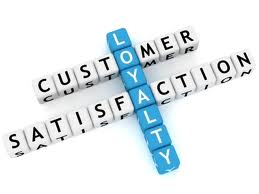 Customer satisfaction and loyalty are key ingredients for every business. If you want to create a legion of satisfied and loyal customers you’ll need to learn what I learned on one of my first sales jobs.
Customer satisfaction and loyalty are key ingredients for every business. If you want to create a legion of satisfied and loyal customers you’ll need to learn what I learned on one of my first sales jobs.
As a college student, I spent one summer selling encyclopedias door to door. After a week of training I was sent out into the field where my initial day in the field was a picture in contrasts. My first presentation resulted in a sale, but I was almost physically thrown out on the second. Somewhat perplexed, I sought advice from my father, who spent his career in sales and sales management. “Dad,” I said, “I can’t figure it out. I made the same presentation to both customers and got entirely different results.” My father asked, “Was everything the same?” “Of course it was,” I answered. “I’ve been practicing my presentation for a week.” My father asked, “Was everything on both calls exactly the same?” I thought for a moment. “Everything was the same,” I said, “except the customer.” My father smiled and then congratulated me on discovering one of the most important keys to sales success: People are different. If you want to sell them, you must do it the way they want to buy, not how you like to sell. Mastering this skill will go a long way towards helping you build customer satisfaction and loyalty.
Most salespeople intuitively treat each customer differently; however, they usually relate better to some customers than others. When you experience a good relationship with a customer from the start, you are most likely selling in your comfort zone; that is, your natural style of selling “fits” the approach that the customer appreciates when buying. These customers are likely to be both satisfied and loyal because of how you sell them.
On the other hand, when it’s difficult to establish rapport or make progress with a customer, you are probably selling outside of your comfort zone. The customer wants to buy in a way that is in conflict with your natural style. In these situations, you have two choices: adapt your style or find another customer who likes the way you sell. Unfortunately, this approach will not help you build customer satisfaction and loyalty. Therefore , you probably only have one choice, because if you don’t adapt, you’ll have to find another customer anyway.
One way to improve your ability to adapt is to recognize and respond to your customer’s motivational needs. Motivational needs are internal desires that cause people to respond in a particular way. Although we can’t look inside of people and see their needs, we can observe their behavior. People do things for a purpose. If we recognize their behavioral patterns and trends, we can anticipate what it takes to meet their needs. When people’s needs are met they reward you with customer satisfaction and loyalty.
How people respond in certain situations gives clues to their motivational needs. The more frequent and consistent a behavior is the stronger the motivational need. For example, if you ask a customer what type of food she would like for lunch Chinese, Italian, or French and she always prefers Italian, you can reasonably be sure she has a strong desire (e.g., need) for Italian food. Furthermore, taking her to an Italian restaurant will do more to enhance customer satisfaction and loyalty than taking her to your favorite Chinese restaurant.
A simple, practical, and reliable approach for recognizing and understanding motivational needs is called Social Motives. The concept of Social Motives was developed by David McClelland[i], a professor of psychology at Harvard University. In his research, McClelland found that we learn these needs from our experiences growing up, from how others react to our behavior, and from the successes, rewards, frustrations, and anxieties of our current experiences. The Social Motives consist of three basic motives:
- Achievement, or the need to excel
- Affiliation, or the need to belong or relate to others
- Power, or the need to influence and control others
Each of these three motivational patterns exists to some varying degree in each of us, according to McClelland’s research. We are, however, primarily motivated by one pattern. When we interact with others, our primary pattern affects the way in which relationships develop, sometimes producing fulfillment, sometimes significant stress. The interaction between our pattern and that of others makes some situations stimulating, others frustrating or boring, thereby affecting our personal effectiveness, often in dramatic ways.
When you understand the dynamics of each Social Motive, then analyze your own motivation and that of your prospects and customers, you can improve your sales performance in significant ways. This understanding includes fully recognizing what Social Motives are not.
They are not a system of stereotyping or pigeonholing people.
- They are not a replacement for others selling skills and strategies.
- They are not a method of manipulating people.
Social Motives should be used to help you understand people, not judge them. When used effectively, Social Motives allow you to adapt your selling style so that customers view what you say in the best light possible. This increases customer satisfaction and loyalty because your approach to selling will match how your customers like to buy.
[i]. The Achieving Society: Van Nastrand, 1961
